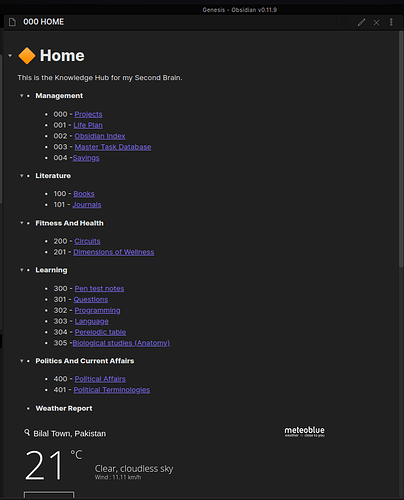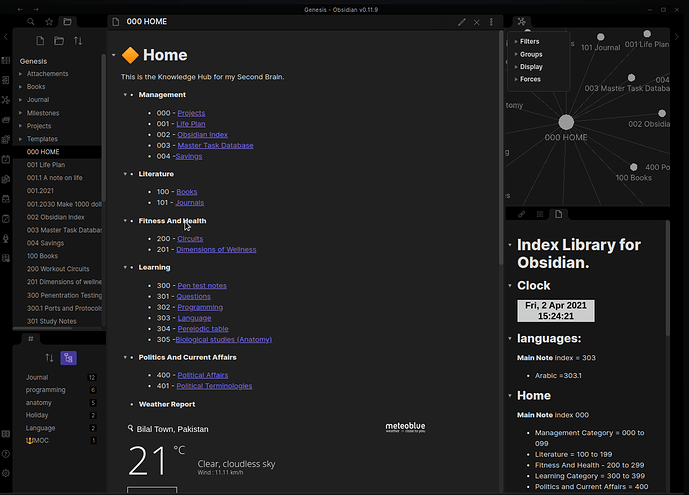Welcome to the community, I will like to add some, from my experience;
You can
- Set up a Johnny decimal styled workflow, https://johnnydecimal.com
- You can add ranges of numbers before your note name.
- Now how does this help? It’s simple. You assign these numbers to specific topics.Like you may assign 100 to Biology (in my case) and all the sub topics or notes or information you come across that relates to biology, you write it under the 100 category like this;
100 Biology
100.1 Classification
100.1.1 Naming
100.1.2 Geographical Classification
100.2 Anatomy
etc. you get the point.
-
Now don’t worry about forgetting these numbers, I suppose you know that we can move around notes in obsidian to our preference. you can just make a new note: write down the classification (the numbers and their respective topics) on a broader level; Which means don’t write down every small thought which you make notes about in this note. Just write down broader topics and their indexes inside this note. You can name this note OBSIDIAN INDEX. Now just drag the note and put it towards the far right or far left of your Obsidian view. This way this is always open. You can always quickly add the index to a new topic you Started to dive into.
-
Why keep the indexes? It’s because when in far future you need to search for topics that relate to biology, you just search it on the search bar by putting 100 in the search and the search will open all the notes containing 100 in front of their names.If you want to be more specific, you can just type 100.1 and Obsidian will show you every thing about your Classification notes as I showed above.
-
Now as the basics are covered, I would like to tell you my way of making a Home page. Get creative inside your homepage, but keep in mind that it should be encouraging. If you open it you should see the broader areas of your life in Bold letters and the topics and sub categories are under them in links.
-
You can draw inspiration from our Intellectual community by going into their published vaults and seeing their take on PKM The All Obsidian-Publish(s) Collection by Leo, Latest Update: 20210324
-
Finally I don’t want to confuse you so I will share some screenshots of my system. I hope I was of some Help to you for showing you how you can diversify your system.
-
IF you are wondering what is that 21 degree centigrade mark, it is the Weather report I have embedded from Meteoblue. Just go to Meteoblue’s Website and configure your Weather widget and paste the whole iframe inside your note (I prefer Home Note). You can also embed a clock inside your Notes. I like to embed the clock on top of the index note.


